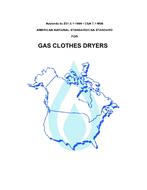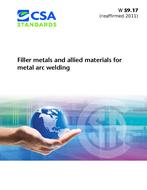Preface
This is the second edition of CSA C22.2 No. 195, Motor-operated food processing appliances (household and commercial), one of a series of Standards issued by CSA Group under Part II of the Canadian Electrical Code. It supersedes the previous edition published in 1987. The major differences between this edition and the previous edition include the addition of requirements for blender blade endurance test and the requirements for rechargeable battery-operated food processing appliances. For general information about the Standards of the Canadian Electrical Code, Part II, see the Preface of the latest issue of CAN/CSA-C22.2 No. 0, General Requirements – Canadian Electrical Code, Part II.
Scope
1.1 This Standard applies to motor-operated food processing appliances intended for use on nominal system voltages of 600 V and less, except that, where appliances are driven by universal type motors or electromagnetic mechanisms, the Scope is limited to appliances rated for use on nominal system voltages of 240 V or less. This Standard applies to appliances designed to be used in accordance with the rules of the Canadian Electrical Code, Part I, in non-hazardous locations. Note: For convenience, the short term “appliance” or “equipment” is used in this Standard. 1.2 This Standard applies to permanently connected, cord-connected, and rechargeable battery operated appliances for household and commercial use in nonhazardous locations. 1.3 This Standard applies to motor driven blenders, can openers, churns, coffee grinders, coffee mills, food processors, ice cream makers, ice crushers, juice extractors, knives, knife sharpeners, meat choppers, grinders, saws, slicers and tenderizers, mixers, potato peelers, shredders, and similar appliances. 1.4 Requirements for cord-connected, double-insulated appliances are specified in Annex A 1.5 Requiremnts for rechargeable battery-operated appliances are specified in Annex B. 1.6 This Standard does not apply to appliances that are covered by specific Standards of the Canadian Electrical Code, Part II. 1.7 In this Standard, “shall” is used to express a requirement, i.e., a provision that the user is obliged to satisfy in order to comply with the standard; “should” is used to express a recommendation or that which is advised but not required; and “may” is used to express an option or that which is permissible within the limits of the Standard. Notes accompanying clauses do not include requirements or alternative requirements; the purpose of a note accompanying a clause is to separate from the text explanatory or informative material. Notes to tables and figures are considered part of the table or figure and may be written as requirements. Annexes are designated normative (mandatory) or informative (non-mandatory) to define their application.
Product Details
- Edition:
- 2nd
- Published:
- 06/01/2016
- ISBN(s):
- 9784488304163
- File Size:
- 1 file , 2.2 MB
- Product Code(s):
- 2424567, 2424567, 2424567


